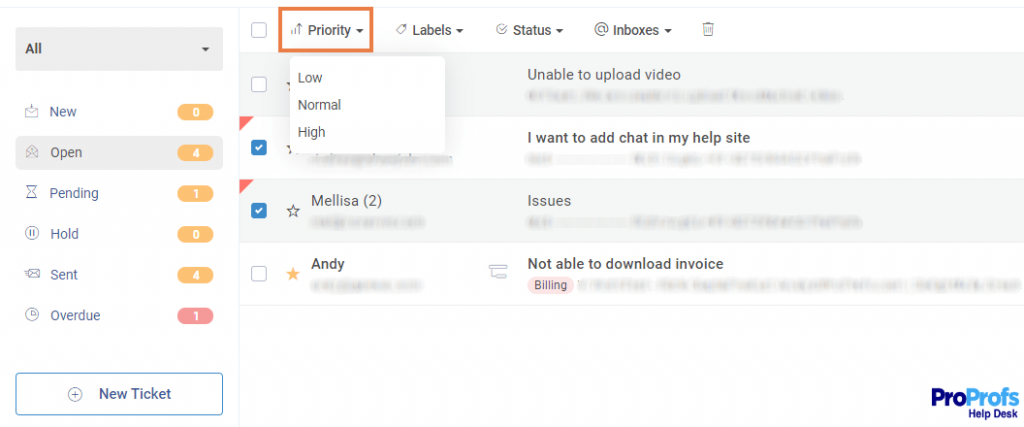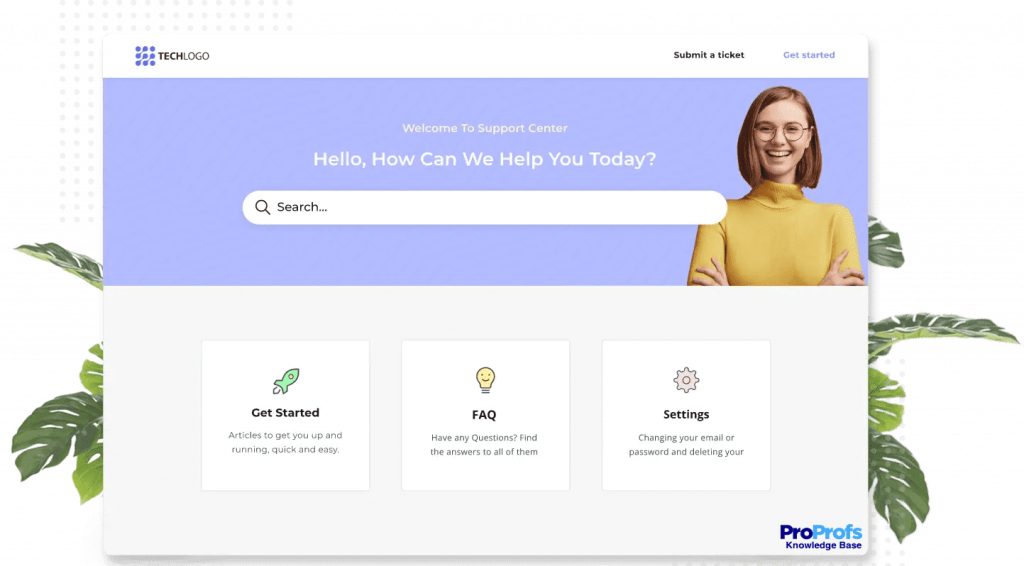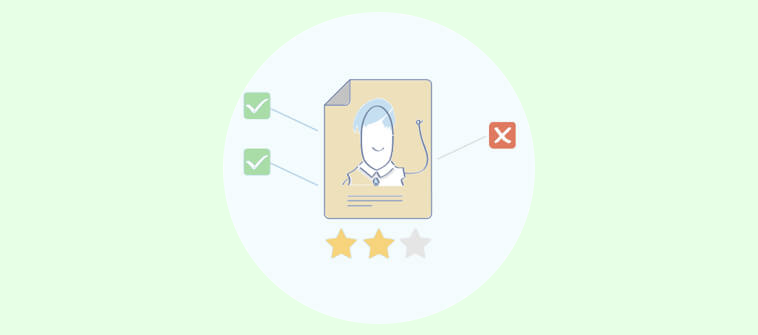Things break, employees lose their cool, and products never reach on time – leading to thousands of customer complaints.
When dealing with angry and complaining customers, agents have to walk on eggshells. A single mistake, and you can lose them forever. So what can you do to bring the smile back on your customers’ faces?
Well, you need to create an effective complaint management strategy. One that answers major questions like how to deal with customer complaints, how to prioritize urgent ones, how to capture customer feedback and more.
Although dealing with upset customers can be challenging, you must look to handle these situations in a way that solves the problem and retains the customer.
Don’t know where to start? We are here to help.
In this blog, we will discuss the role of a complaint management system and the importance of creating a powerful strategy. Later, we will explore 10 customer complaint management tips and strategies that will help you drive retention and loyalty.
Let’s go!
What Are Customer Complaints?
Customer complaints happen when customers are dissatisfied with a product, service, employee, or your company’s overall process. Most customers start complaining when there is a gap between what they expected and what your business delivered to them.
For example, a customer can complain about an impolite employee who did meet their expectations. Similarly, a customer can share a complaint about a product or service that did not meet their expectations.

Here are some top reasons why customers lose their cool and complain:
- Long hold times
- Receiving defective products
- Difficult checkout process
- Late product or service delivery
- Lack of follow-up or feedback collection
- Uninterested service rep
- Contacting multiple times for a single issue
As a business, it is important to identify trends in customer complaints and fix the underlying issue once and for all.
Importance of Creating a Complaint Management Strategy
Let’s discuss the impact of effective complaint management on your business.
1. Complaints Highlight Your Improvement Areas
Believe it or not but complaints are good for your business. In fact, you should feel lucky if you get them. According to a study, around 91% of customers who are unhappy with a business will just leave without complaining.
Most businesses are scared of complaints, and that’s never a good sign. To become a truly customer-centric business, you need to treat every complaint as an important lesson.
For example, a customer complaint about late delivery can eventually help you improve inventory management. Similarly, complaining customers can highlight gaps in customer service training.
2. Build Better Products or Services
When you sit to analyze complaints, you can find useful information and suggestions. Customer complaints can help you identify the various gaps in your products or services.
For example, if you receive frequent complaints that your mobile app gets stuck multiple times, you can communicate this to the development team to enhance app performance. Similarly, if multiple people complain that your electronic gadget has heating issues, it’s time to get it fixed.
When you give your undivided attention to such feedback, customers feel that you value their time and opinions. Moreover, when you improve your products based on their suggestions, it creates the perfect feedback loop.
3. Manage Your Brand Reputation
As the world moves online, customers are actively sharing their experiences with brands via reviews, videos, or social media posts.
Negative online reviews are powerful enough to make you lose out on thousands of potential customers. According to a report, 94% of respondents say an online review has led them to avoid a business.
While you cannot stop unhappy customers from posting negative reviews online, you can always respond to them to turn the situation around.

In fact, it is clear from the above statistic that customers who read online reviews read your company’s responses to them as well.
4. Prevent Recurrence & Delight Customers
If you keep receiving the same complaints over and over, are you really improving? With an effective complaint management strategy, you can avoid the recurrence of complaints.
With complaint management software, you can track all complaints in one place and see when they were received or how they were solved. This helps you analyze trends and understand the root cause of customer problems.
As you keep fixing the underlying issues behind complaints, you move towards enhancing customer satisfaction and experience. And we all know that as customer satisfaction increases, loyalty and sales also go up.
10 Customer Complaint Management Strategies
No matter how many years your business has been operational for or how reputed your organization is, complaints and grievances are inevitable.
Here are some of the top complaint management strategies that will help you turn complaints into compliments:
1. Differentiate Between Complaints & Requests
The first step of any effective complaint management process is to define what the word “complaint” means to your business. Most businesses use the terms service requests and complaints interchangeably, leading to more confusion.
In most cases, a complaint is negative feedback shared by a customer when they encounter a poor experience with your product/service or staff member.
On the other hand, a service request is a formal request made when the customer demands something new – a piece of information, approval, or advice.
For example, imagine a customer bought a brand new LED television for his home. Here, they can request the company to send over someone for installation. This should be considered a formal request by the business. On the other hand, if the customer accuses the company of delivering a defective product, it shall be considered a complaint.
Knowing this difference beforehand will help you treat different customer messages differently and avoid any further confusion.
2. Track Complaint Progress With Help Desk Software
Are you using spreadsheets or email to track customer complaints? Well, it’s time to update your tool stack and automate this process.
It is common for customer service teams to lose track of complaints and requests, leading to poor customer experience. However, with the right help desk software, you can ensure no message can slip through the cracks.
Whether customers share their complaints via email, chat, or web forms, help desk systems allow you to automatically route all incoming complaints to relevant agents. This will help you create a sense of ownership among team members and hold them accountable when something goes wrong.
You can even share automated email notifications and alerts to keep everyone on the same page. For example, customers can receive an automated email when their complaint is registered by your team.
3. Apologize With Empathy
When customers are angry or upset with something, they want you to empathize with them even before you offer the right solution. By putting yourself in their shoes, you can grasp the situation better, create the right space for communication, and establish trust.
Sharing an apology that lacks empathy is like using duct tape to fix a leaking boat – it simply does not work.
Whether you handle a complaint on call, via email, or by live chat, there is always room for empathy. For example,
Instead of sharing a plain apology like this:
“I’m extremely sorry for the mistake at our end.”
You can look to add a healthy dose of empathy in your statements:
“I’m extremely sorry you have to go through this. I can understand how frustrating this must be for you. I would feel the same way too!”
As you can see from the above examples, even a slight change in your tone and choice of words can make or break a customer relationship.
4. Dig Deeper to Understand the Core Issue
Sometimes, customer service agents are in such a hurry to respond that they miss understanding the core issue behind a complaint.
Before you jump in to offer a solution, you need to practice active listening. Moreover, you must ask the right probing questions to get the complete picture.
Here are some examples of probing questions you can use in email, chat, or call:
- Can you give me some background about the issue?
- When you say XYZ, what exactly do you mean?
- How is the issue affecting you?
- When exactly did the problem begin?
- Have you tried any solutions yet?
When the customer has explained the issue to you, it’s important to summarize it to them. For instance, you can say, “Let me make sure I understand this right..” and then repeat what you have understood. As you narrate their issue back to them, pause at regular intervals and see if they make any attempts to add or correct information.
5. Explain the Next Steps You Will Take
So you carefully listened to the customer’s concerns and apologized for the mistake. Now what? You must explain the steps you will take next to resolve the complaint.
Customers want to know what your business will do once the complaint is registered. By sharing relevant details, you can win their confidence and establish transparency.
Whether you need approval from a senior or assistance from another business department, tell customers exactly what will happen and offer them a realistic time frame. Here are some examples you can use to keep customers in the know-how:
- I have initiated a full refund for your order. The amount shall be credited within X hours/days.
- I have escalated your complaint to our manager. He will look into it ASAP!
- Our technical team is working hard to resolve your issue. You can expect your issue to be fixed by tomorrow.
If you do not have a ready solution, it’s best to be honest ,and tell the customer you will need more time to look into the problem.
6. Create an Action Plan For High-Risk Complaints
As soon as you receive a complaint, you first need to determine its severity. High-risk complaints can hamper your reputation and jeopardize the business.
To create an effective complaint management strategy, you must devise an action plan for high-priority complaints.
For this, you can assign different priorities to different complaints. For example, if a customer shares that their account has been compromised, it can be treated as a high-priority complaint. On the other hand, if someone tells you that their product arrived an hour late, this can be considered a low-priority complaint.

7. Keep Complaint Response Templates Handy
Even though every complaint is unique, there can be stark similarities between them.
As a customer service professional, you are bound to receive complaints about late product deliveries, defective products, incorrect invoices, poor staff behavior, and more.
Templates are pre-designed responses that can help you draft quick and professional email replies. You can create a collection of complaint response templates and save them in your help desk system. Here is an example:

Kindly note that customers are smart and know when a response has been copy-pasted to them. To avoid this, you must personalize the message by including the customer’s name, order details and add other relevant information concerning their complaint.
8. Reduce Complaint Tickets With a Knowledge Base

In today’s digital age, customers love self-service, and you must look to create a solid knowledge base. According to a report by American Express, 6 out of 10 US customers say a digital self-service tool is their preferred customer service channel.
A well-designed knowledge base is one of the best customer complaint management tips. It can help your complaining customers find all the relevant answers with minimal friction.
For example, imagine a customer who recently bought a portable speaker isn’t able to connect it with his smartphone. Now, instead of raising a complaint ticket and waiting for a response, he can simply visit the online knowledge base and read the required steps.
An online self-service portal can also help you reduce the burden on your support reps and allow them to focus their attention on high-priority complaints.
An online self-service portal can also help you reduce the burden on your support reps and allow them to focus their attention on high-priority complaints.
9. Share CSAT Surveys & Capture Feedback
If you take a bird’s eye view of your process, you will realize that complaints are nothing but genuine feedback. Whether negative or positive, such valuable inputs can help you realize where you are going wrong.
To measure the success of your complaint management strategy, you can share CSAT surveys with customers using your help desk system.

The best time to share these surveys is right after their support interaction with your business. Customers can share insights into what went well and what can be further improved.
Connecting with your customers who shared poor ratings in their survey is also important. You can call them to understand the reason behind their dissatisfaction. Moreover, let your customers know that your support heroes are available whenever they need assistance.
10. Go the Extra Mile to Appease Upset Customers
Once the complaint has been resolved, it’s the perfect time for you to go the extra mile to strengthen the customer relationship.
The goal should not simply be to resolve a complaint. The goal should be to turn negative experiences into beautiful memories that encourage customers to keep coming back.
Let’s be honest. Complaining is not fun for anyone as it can be mentally exhausting and frustrating. To make up for the lost time and negative experience, you can offer compensation in the form of product discounts, offers, freebies, service credits, etc.
For example, if a customer complains about late product delivery, you can go ahead and offer them a discount coupon they can use during the next purchase. This will bring a smile back and encourage the customer to buy again.
Handle Complaints Quickly With Effective Complaint Management
Complaints can quickly pile up, impacting your support team’s time and productivity. In addition, when your products fail to meet expectations or issues are left unresolved, your company’s reputation can be tainted.
With an effective complaint management plan, you can ensure every customer problem is handled with the utmost care and attention. Make sure your strategy involves all the relevant steps – apologizing with empathy, probing to better understand the issue, explaining the next steps, and capturing customer feedback once the issue is resolved.
Powerful complaint management software such as ProProfs Help Desk can help you automate this process. You can track the complete lifecycle of complaints, from the the moment they are received to the time they are marked as resolved. You can even communicate with other departments to deliver top-notch customer service at scale.
 Tips
Tips
We’d love to hear your tips & suggestions on this article!
FREE. All Features. FOREVER!
Try our Forever FREE account with all premium features!
 We'd love your feedback!
We'd love your feedback! Thanks for your feedback!
Thanks for your feedback!







